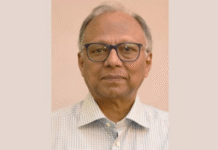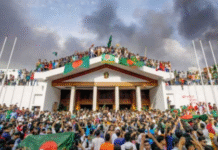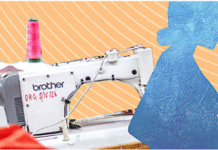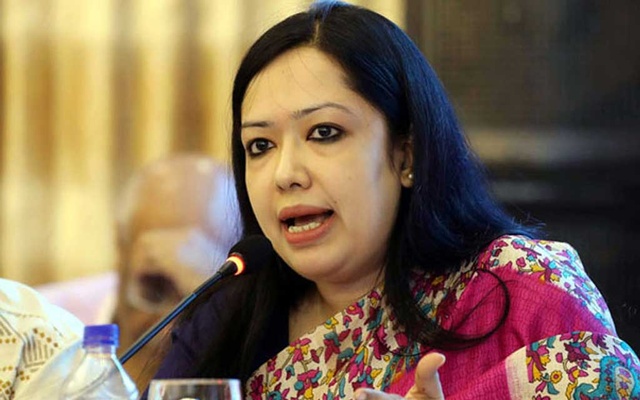TBS

Fariduddin is a compounder at a pharmacy in Mirpur. A father of three children, he is now facing the most basic yet difficult of all challenges — how to feed his family of five.
“It is getting harder to make ends meet nowadays,” he said. “It feels like each day, my income is shrinking. Last month, I got a raise, yet it is not enough.”
So what did he do?
“I borrowed Tk10,000 from the owner of the pharmacy to bribe a local man to get my eldest son, who is studying at the National University, a part-time job. I can no longer meet my family’s costs alone,” he said.
Khairul Mamun Mintu, an NGO employee from Savar, said, “Over the past three years, there has been a major change in our lifestyles. Three years ago, I had about Tk1 lakh in savings at the bank, but now I am burdened with debts of around Tk20,000 to Tk30,000.”
He added, “Back then, when my monthly salary was Tk35,000, I used to save around Tk8,000 to Tk10,000 after covering household expenses. Recently, even after a Tk3,500 increment, I hardly have any money left after the 20th of the month. To get through the remaining days, I have to borrow at least Tk4,000–5,000. Repaying this debt the following month forces me to borrow again.”
He further said, “In my five-member family with two children, food expenses were previously around Tk8,000 a month, which has now risen to nearly Tk13,000. House rent has increased by Tk2,200 in three years. Children’s education costs have gone up by about Tk1,000 during this period. Transport expenses have risen by an average of Tk2,000. To meet these extra expenses, I had to break into my savings during my wife’s child delivery last year. We have had to compromise in many other ways as well.
“In reality, the rise in my expenses — driven by soaring commodity prices — far outweighs the Tk3,500 increment I have received. It is simply not enough to cope with the present circumstances,” he added.
Rural communities are not faring any better.
Tahmina Parveen Shyamali, a woman entrepreneur from Bogura, said that the sharp rise in commodity prices has left her struggling to manage household expenses. “We have had to cut down from the previous month’s budget. Costs have gone up in every sector, including education and healthcare. Now we calculate everything before spending. I am even forced to buy fewer medicines,” she said.
Ripa Sultana, a housewife from Bhimpur village in Naogaon Sadar and member of a farming family, said she has also had to make compromises with her children’s nutrition. “Our household has eight members. I used to be able to buy fruit for everyone, but now I only buy it for the children. We have almost given up eating meat. Fish prices are soaring too,” she said.
These stories are not isolated struggles; they reflect a nationwide reality captured in a survey by the Power and Participation Research Centre (PPRC).
According to the survey, poverty has surged to nearly 28% from 18.7% in 2022, while extreme poverty has almost doubled to 9.35%. One in four citizens now lives below the poverty threshold, and another 18% remains vulnerable to slipping into poverty at any moment.
“Inflation, wage rate stagnation, and investment stagnation — all of these are contributing to the situation. Since 2022, the situation has been dire. Income has not increased. Especially those who are under the poverty line, their cost of living has increased dramatically.” Professor Mustafizur Rahman, Distinguished Fellow, CPD
With incomes stagnating, food costs absorbing more than half of household budgets, and debts rising faster than savings, millions are finding daily survival harder than ever.
This worsening scenario coincides with 15 years of unchecked corruption and rising inequality. The national Gini coefficient — a key measure of income inequality — rose from 0.334 in 2022 to 0.436 in mid-2025. In urban areas, inequality has surged to 0.532, reflecting a widening divide between the wealthy elite minority and the struggling majority.
The bottom 10% of households earn only Tk8,477 a month but spend Tk12,294, often resorting to borrowing. In stark contrast, the top 10% take home Tk109,390 — nearly 13 times higher — and still save after meeting their expenses.
In 2022, an urban family earned Tk45,578 on average; today that figure has fallen to Tk40,578. Yet their monthly expenses now stand at Tk44,961. For rural households, average monthly income rose modestly to Tk29,205 from Tk26,163, with expenses of Tk27,162. Nationally, income and expenditure are almost identical — Tk32,685 and Tk32,615 — leaving virtually no scope for savings.
The cost of food alone now absorbs 55% of household spending. On average, families spend Tk10,614 per month on food, leaving little for education (Tk1,822), healthcare (Tk1,556), or transport (Tk1,478). As inflation erodes real incomes, families increasingly survive by borrowing.
Professor Mustafizur Rahman, Distinguished Fellow at the Centre for Policy Dialogue (CPD), thinks that the PPRC survey matches the ground reality.
“Inflation, wage rate stagnation, and investment stagnation — all of these situations contribute to the situation. Since 2022, the situation has been dire. Income has not increased since. Especially those who are under the poverty line, their cost of living has increased dramatically, like the crunching food inflation,” he said, “And the PPRC survey shows that extreme poverty has increased to 9.35% this year from 5.6% three years ago.”
And he stated the main reasons behind the situation.
“Firstly, inflation has outpaced wage rate growth; since 2022, inflation has gone up by almost 40%;” he said. “Secondly, investment has been stagnant, and job creation has slumped. These two factors have contributed the most to the crisis. Those who were above the poverty line, some of them were pushed below.”
Debt trap for the poor
The debt burden of households has grown into a structural crisis. The average household debt in mid-2025 reached Tk189,033 — 45% higher than the average savings of Tk130,728. Among the poorest 10% of families, the imbalance is extreme: debts of Tk62,767 compared to meagre savings of Tk19,737. By contrast, the richest 10% maintain average savings of Tk716,265, higher than their debts of Tk643,083.
For the poor, debt is no longer a means of investing in farming or small businesses but a lifeline for survival. Nearly one-third of loans are spent on household consumption, while 11% go to healthcare. More than half of families have at least one chronically ill member, a factor pushing them deeper into the debt cycle.
PPRC notes that in the past six months alone, the poorest 40% of households experienced a 7% net increase in debt. This signals that borrowing is no longer episodic but continuous, trapping families in cycles of dependency that further erode resilience.
Unemployment and income inequality
Employment figures reveal another critical stress point. Only 38% of respondents reported having jobs, with many working fewer than 40 hours a week. Female labour force participation remains stuck at 26%, far below regional averages. Meanwhile, 45% of workers are self-employed in precarious activities without stability or benefits.
Hossain Zillur Rahman, PPRC’s executive chairman, described the situation as an “employment emergency”, noting the rise of disguised unemployment. The lack of adequate job creation over the past decade has compounded poverty, leaving a large youth population without secure livelihoods.
While the majority of citizens slip into hardship, wealth has concentrated at the top. The richest decile of households not only earn vastly more but also accumulate savings, even during inflationary shocks.
In contrast, middle-income households, making up 40% of the population, now spend slightly more than they earn (Tk29,826 versus Tk29,277). The result is a hollowing out of the middle class — long considered a pillar of economic stability.
It may be tempting to jump to the conclusion and put the blame squarely on the current government. However, the survey is based on the 2022 Household Income and Expenditure Survey by the Bangladesh Bureau of Statistics (BBS). So, it is the cumulative result from the last two years.
“But the government needs better market management. Food inflation is still high, and inflation is still high. The budget was very traditional; it didn’t have adequate focus on social safety. The government needs to work more on employment generation, bringing investment and controlling inflation better to mitigate the crisis,” said Mustafizur Rahman.









